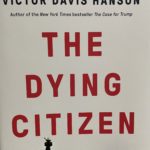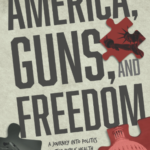CINO Prep
Although Catholic schools look good when compared with their public counterparts, they don’t fare as well in contrast to the way they used to be. In the wake of Vatican II, “Radical reformers tore at every aspect of Catholic life, questioning time-honored practices and beliefs,” Philip F. Lawler writes in The Faithful Departed: The Collapse of Boston’s Catholic Culture. “Catholic schools jettisoned their religious education programs; the old reliable Baltimore Catechism quickly became a collectors item.”
“In parochial high schools, religion classes became freewheeling discussion sessions, with students encouraged to reflect on the works of contemporary theologians who announced that ‘God is Dead,’ or to analyze the verses of pop songs.”
Lawler is the editor of Catholic World News. From what he found, it looks like too many parochial schools, while posting superior SAT scores vis-a`-vis public institutions of lower learning, are in danger of becoming Catholic in Name Only, or CINO.
“The rote question-and-answer approach of the old Baltimore Catechism was replaced by a lighter program that encouraged young students to explore their own feelings rather than master truths,” Lawler recounts. “The results were predictable; even in Catholic schools, students remained in the dark about fundamental truths of the faith.”
“A survey by the Catholic Press Association found that among Catholics between the ages of fifteen and seventeen, only 37 percent could name the four Gospels; most Catholic teenagers (56 percent) could not even name one.” For the record, they are Matthew, Mark, Luke and John.
This writer bore painful witness to many of the trends Lawler sketches out. I went to a Catholic schools in the 1960s and 1970s and still know all the lyrics to Kumbaya and Little Boxes On The Hillside, much as I’d rather forget them.
Nevertheless, the coup de grace, as Lawler shows, is of a more recent vintage—sex education. “In Boston, archdiocesan officials chose a program called ‘Talking about Touching,’” Lawler reports. “In this curriculum, first-grade students practice giving the proper names to male and female genitalia.”
“The second grade brings classroom discussion of various types of abuse; children are asked how they would respond if a relative suggested a ‘touching game.’” In my own diocese in Virginia, Bishop Loverde has tried to introduce such a program.
He and his brother bishops are trying to show they are reforming in the wake of scandals that rocked the Church over the past two decades when former Catholic school students, overwhelmingly male, went public with charges that priests molested them. Many bishops responded to the scandal by transferring the priests, who then molested other young boys.
“The arrogance of the [United States Conference of Catholic Bishops] USCCB in presuming to instruct students about sexual abuse was breathtaking,” Lawler notes. It still is.
“For years, trusting parents had put their children into Catholic parishes and schools, confidently assuming that Church leaders would protect them,” Lawler observes. “Now the same church leaders who had betrayed their trust presumed to instruct the parents and their innocent children about the dangers that children might face.” The USCCB got this brainwave after getting some advice from liberals such as Notre Dame professor Scott Appleby.
Maybe this is one reason why Evangelical Protestants have overtaken Catholics as the largest religious minority in the United States, as the Pew Foundation recently found. Correspondingly, it could be why the number of Christian academies, by their own tally, grows annually as the roster of Catholic schools, as Lawler shows, thins.
“With Mass attendance as the leading indicator, every other statistical index of Catholic practice and belief showed a similar decline between 1960 and 1980,” Lawler writes. “Nearly half of the Catholic elementary and high schools in the United States closed.”
Malcolm A. Kline is the executive director of Accuracy in Academia.



